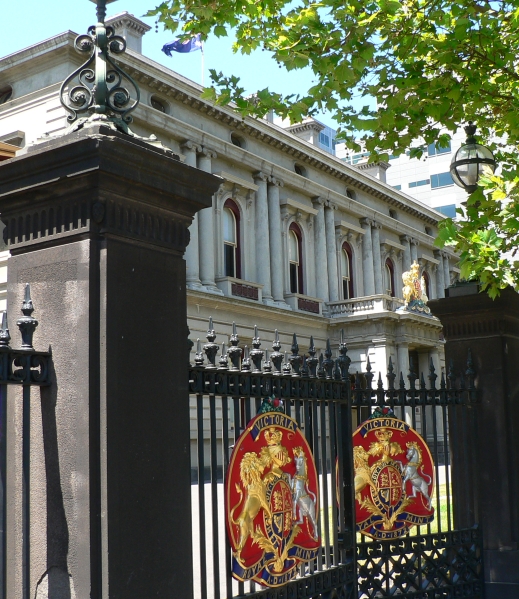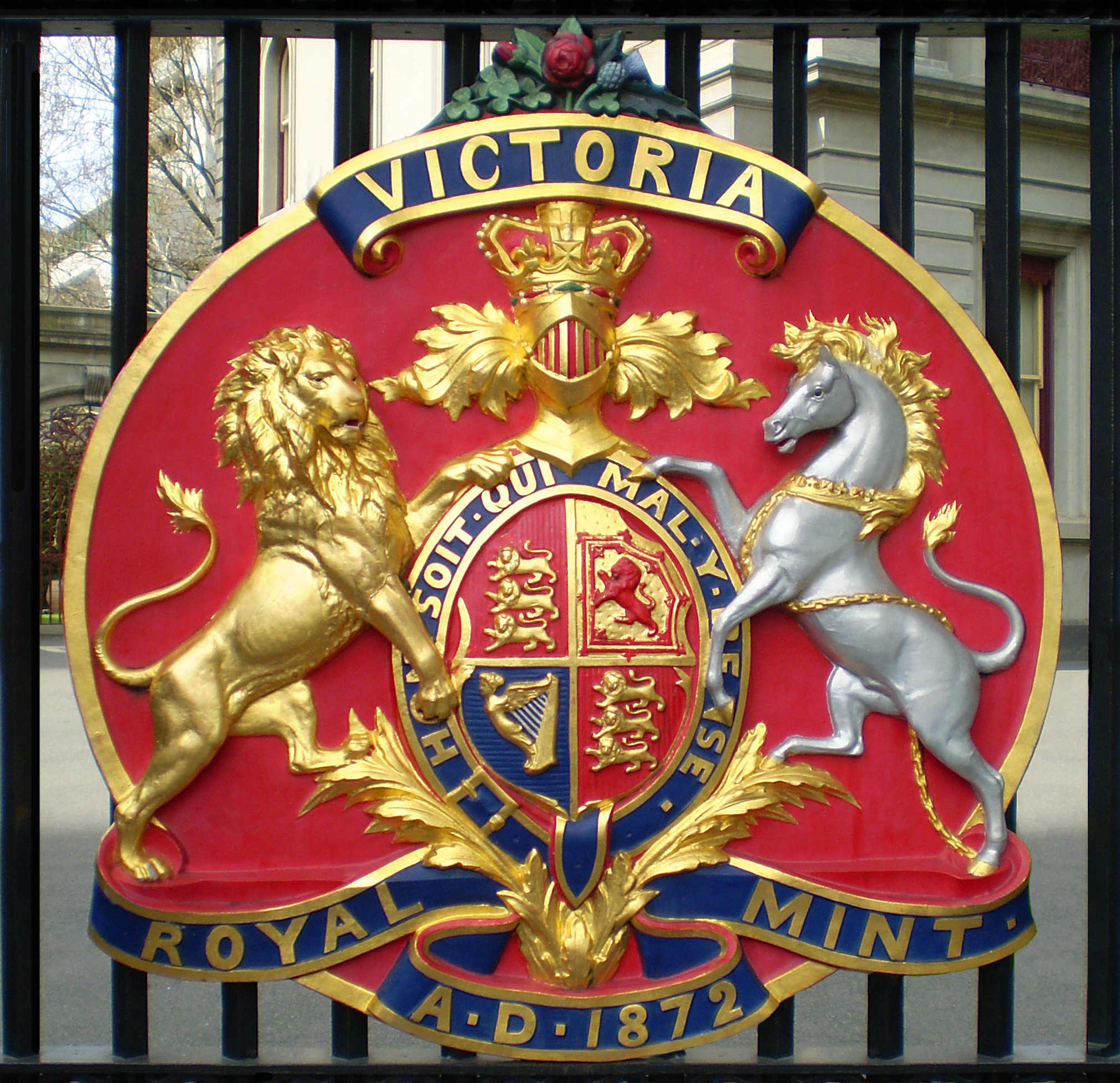Melbourne Mint on:
[Wikipedia]
[Google]
[Amazon]

 The Melbourne Mint, in
The Melbourne Mint, in
Photo: Melbourne Mint
from the State Library of Victoria
Brief history and photographs of the Melbourne Mint
from the Australian Architecture Discussion Forum.
Melbourne Mint - Online Coin Club
list of all coins struck by the Melbourne Mint. Mints of Australia Buildings and structures in Melbourne City Centre Heritage-listed buildings in Melbourne Renaissance Revival architecture in Australia 1872 establishments in Australia Mints (currency) 1968 disestablishments in Australia {{coin-stub

 The Melbourne Mint, in
The Melbourne Mint, in Melbourne
Melbourne ( ; Boonwurrung/Woiwurrung: ''Narrm'' or ''Naarm'') is the capital and most populous city of the Australian state of Victoria, and the second-most populous city in both Australia and Oceania. Its name generally refers to a met ...
, Australia, was a branch
A branch, sometimes called a ramus in botany, is a woody structural member connected to the central trunk (botany), trunk of a tree (or sometimes a shrub). Large branches are known as boughs and small branches are known as twigs. The term '' ...
of the British Royal Mint
The Royal Mint is the United Kingdom's oldest company and the official maker of British coins.
Operating under the legal name The Royal Mint Limited, it is a limited company that is wholly owned by His Majesty's Treasury and is under an exclus ...
. It minted gold sovereigns from 1872 until 1931, and half-sovereigns (intermittently) from 1873 until 1915. In 1916 it commenced minting Commonwealth silver threepences, sixpences, shillings and florins. From 1923 it minted all pre-decimal denominations. It minted rarities such as the 1921/22 overdate threepence, 1923 half-penny and 1930 penny, as well as Australia's four commemorative florins in 1927 (Canberra), 1934/35 (Melbourne Centenary), 1951 (Federation Jubilee) and 1954 (Royal Visit). It assisted the Royal Australian Mint in Canberra in producing one cent coins from 1966 to 1968 and two cent coins in 1966. From 1969 all coin production moved to the Royal Australian Mint
The Royal Australian Mint is the sole producer of all of Australia's circulating coins and is a Commonwealth Government entity operating within the portfolio of the Treasury. The Mint is situated in the Australian federal capital city of Canberr ...
in Canberra, and the building housing the coin minting equipment was demolished shortly afterwards. The remaining administrative building is now the home of the Royal Historical Society of Victoria, and has been leased to the private sector since 2001.
The former Royal Mint is located on the corner of William and La Trobe Streets (280-318 William Street and 387-429 La Trobe Street) and is of architectural significance as one of the most impressive 19th century government buildings in Victoria, and one of few Australian buildings in the true Renaissance revival
Renaissance Revival architecture (sometimes referred to as "Neo-Renaissance") is a group of 19th century architectural revival styles which were neither Greek Revival nor Gothic Revival but which instead drew inspiration from a wide range o ...
style, and a virtual copy of the Palazzo Vidoni-Caffarelli, attributed to Raphael, in Rome (1515).
The mint was built between 1869 and 1872 to the designs of architect J.J Clark whose other notable works included the Old Treasury Building, Melbourne
The Old Treasury Building on Spring Street in Melbourne, built 1858-62 as a home for the Treasury Department of the Government of Victoria as well as the Governor In Council, now houses a range of functions, including a museum of Melbourne histor ...
. It was opened 12 June 1872
The colourful coat of arms
A coat of arms is a heraldry, heraldic communication design, visual design on an escutcheon (heraldry), escutcheon (i.e., shield), surcoat, or tabard (the latter two being outer garments). The coat of arms on an escutcheon forms the central ele ...
placed on the front gates in mid-twentieth century were by the Melbourne woodcarver Walter Langcake
Walter Langcake (21 February 1889, Warragul, Victoria – 6 June 1967, Frankston, Victoria) was an Australian woodcarver and sculptor, who specialised in ecclesiastical decorative arts.
He was active between 1912 and the mid-1960s and was o ...
. The original design, based on Queen Victoria
Victoria (Alexandrina Victoria; 24 May 1819 – 22 January 1901) was Queen of the United Kingdom of Great Britain and Ireland from 20 June 1837 until Death and state funeral of Queen Victoria, her death in 1901. Her reign of 63 years and 21 ...
's coat of arms, is adapted especially for a British Royal Mint branch office in colonial Victoria. The supporting animals are not crowned and a maned horse replaces the usual unicorn
The unicorn is a legendary creature that has been described since antiquity as a beast with a single large, pointed, spiraling horn projecting from its forehead.
In European literature and art, the unicorn has for the last thousand years o ...
.
Current tenants
Melbourne Mint (from October 2012)
A private company, Melbourne Mint Pty Ltd, is currently situated on the ground level and level one of the Melbourne Mint building. Melbourne Mint Pty Ltd belongs to a group of Australian precious metals companies which include Australian Bullion Company (ABC), Gold Merchants International (GMI) and Melbourne Mint Coins. It has no historical relationship to the original Royal Mint.
See also
*List of mints
Mints designed for the manufacturing of coins have been commonplace since coined currency was first development around 600 BC by the Lydian people of modern-day Turkey. The popularity of coins spread across the Mediterranean so that by 6th-centu ...
External links
Photo: Melbourne Mint
from the State Library of Victoria
Brief history and photographs of the Melbourne Mint
from the Australian Architecture Discussion Forum.
Melbourne Mint - Online Coin Club
list of all coins struck by the Melbourne Mint. Mints of Australia Buildings and structures in Melbourne City Centre Heritage-listed buildings in Melbourne Renaissance Revival architecture in Australia 1872 establishments in Australia Mints (currency) 1968 disestablishments in Australia {{coin-stub